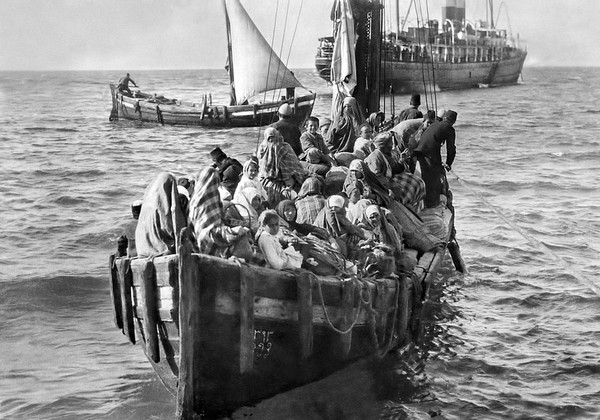By Caleb J. Uwagaba
Immigration and the movement of refugees have been integral parts of human history, shaping societies and cultures across the globe. The United States, in particular, has a rich history of immigration, influenced by various laws and global events. This article will dive into policies, refugee admissions, some available immigrant statistical data, and the recent refugee crisis. Understanding the history of immigration and refugee policies helps us appreciate our society’s diverse fabric. It highlights the ongoing efforts to balance humanitarian concerns with national interests, ensuring that the U.S. remains a beacon of hope for those in need.
Early Immigration and Policies
Back in history, the United States of America. Began regulating immigration soon after gaining independence. Early legislation, such as the Naturalization Act 1790, favored European immigrants. Over time, various acts, including the Chinese Exclusion Act of 1882 and the Immigration Act of 1924, imposed restrictions based on nationality and race. All the above was there to facilitate and make it great for the people who wish to migrate to the great country of opportunities, the United States of America, where many from different cultures and denominations across the globe want and wish to migrate.
Refugee Admissions
Educating ourselves on the concept of refugees, individuals fleeing persecution or violence, became more formally recognized in the 20th century. The Immigration and Nationality Act of 1952 and the Refugee Act of 1980 were significant milestones, aligning U.S. policies with international standards. These laws established procedures for admitting refugees and provided them with legal protections, hope for tomorrow, and a sense of belonging, whether they had been chased in their home countries or just for economic purposes.
Modern Immigration Trends
In recent decades, immigration laws have evolved to address new challenges, including unauthorized immigration and global conflicts. The 1965 Immigration and Nationality Act abolished quotas based on nationality, opening doors to immigrants from diverse regions. Today, the U.S. continues to be a destination for immigrants and refugees seeking safety and opportunities.
Statistics on Immigration
As of 2023, the U.S. foreign-born population reached a record 47.8 million, an increase of 1.6 million from the previous year. Immigrants now account for 14.3% of the U.S. population, a significant rise from 4.7% in 1970. The largest groups of immigrants come from Mexico (10.9 million), India (2.9 million), China (2.4 million), and the Philippines (2.1 million). And these numbers change every single day due to different events that may cause people to migrate.
Recent Refugee Crises
The global refugee population has surged in recent years due to various conflicts and crises. Notable examples include:
- Syrian Civil War: Since 2011, the conflict in Syria has displaced over 6.7 million people.
- Venezuelan Crisis: Economic and political turmoil in Venezuela has led to the displacement of approximately 8.9 million people since 2014.
- Russian Invasion of Ukraine: The ongoing conflict, which began in 2022, has resulted in over 9.2 million refugees.
- The broader East and Horn of Africa and Great Lakes region is hosting around 5.3 million refugees and asylum seekers, with another 18.5 million people internally displaced due to conflict and natural disasters.
The ongoing global conflicts have caused people to be displaced internally or outside of their home countries. In our next article, we will explore the contribution of immigrants and refugees to hosting countries, with a focus on the United States of America.
References
- Migration Policy Institute. (2023). U.S. Immigrant Population and Share over Time, 1850-Present.
- U.S. Citizenship and Immigration Services. (2023). Historical Overview of Immigration Policy.
- United Nations High Commissioner for Refugees. (2023). Global Trends: Forced Displacement in 2022.
- Pew Research Center. (2023). Key facts about U.S. immigration policies and Biden’s proposed changes.
- International Organization for Migration. (2023). World Migration Report 2022.



2 Responses
thank you!
First of all, I want to congratulate Mr. Caleb on this article, great job! It contains valuable information that helps inform our community about the history and statistics of immigrants and refugees in U.S, placing them in the category where they rightfully belong. I’m eagerly looking forward to the next article, which I hope will shed light on the significance of immigration and refugees, especially in the United States. With President Donald Trump frequently imposing executive orders on immigration and refugees, it’s causing concern within our community. Many feel that these actions suggest they are undervalued in America, as the president appears to show a lack of desire to welcome them into the country.